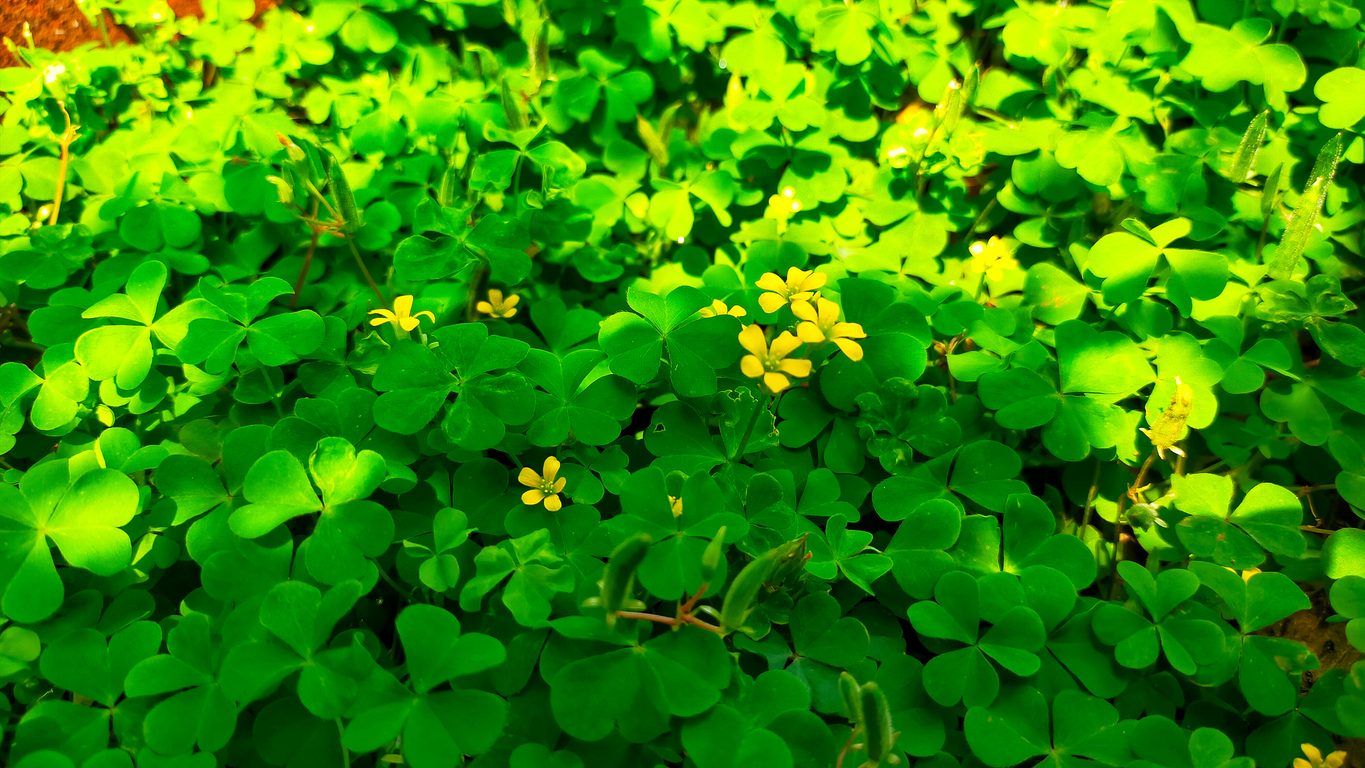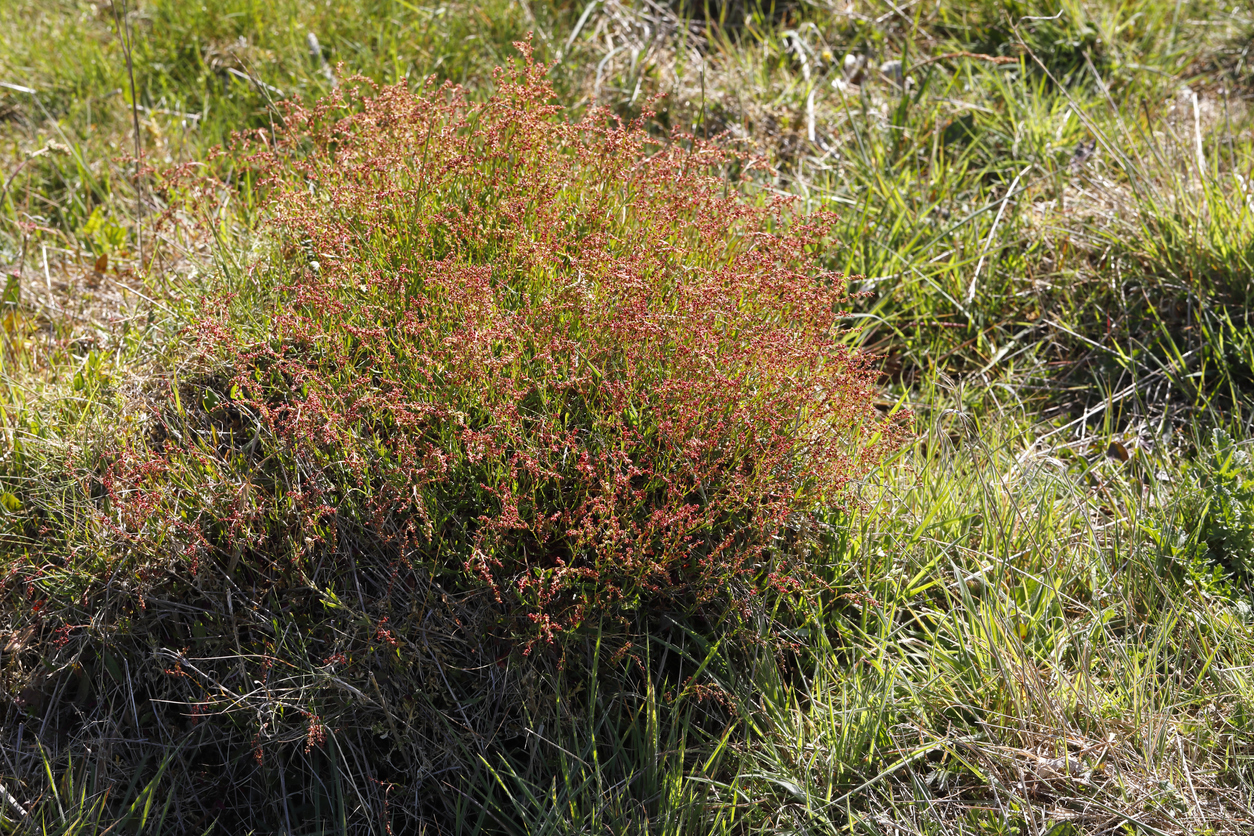

We may earn revenue from the products available on this page and participate in affiliate programs. Learn More ›
Discovering dandelions, clover, crabgrass, lamb’s-quarters, and other weeds growing on your lawn or garden is frustrating. Finding a safe and natural way to kill weeds can take up a lot of your time, especially when it seems like the weeds keep coming back a few days or weeks later. The next time you see a weed growing on your lawn, take a close look to identify what it is before simply pulling it out of the ground. Believe it or not, the types of weeds growing on your grass or in your garden can be indicative about the soil they’re growing in. You can use this information to improve the soil conditions for the grass and other plants that you want to continue to grow while also fending off the weeds and helping prevent them from returning.
Evidence of Compacted Soil
There are several weeds that may indicate that your soil is heavy and compacted. A few of these include chickweed, plantain, prostrate spurge, dandelion, and mouse-ear chickweed. If you find any of these weeds on your lawn, you’ll want to take steps to break up the soil and improve its drainage. Aerating the lawn is the best way to accomplish this goal. Aeration should be performed in the fall or spring, while the grass is actively growing. After aeration, finish up by overseeding the lawn to make the grass denser.
RELATED: The Best Things You Can Do for Your Garden Soil
Evidence of Poor Drainage
Soil that is not draining properly may be covered with various types of moss. Moss is not classified as a weed, but unless you planted it specifically on your lawn, it is nevertheless an unwanted guest. Beyond the moss, there are also some weeds that can indicate that the soil is not draining properly. These include ground ivy, yellow nutsedge, common chickweed, and mouse-ear chickweed. After pulling the weeds from the soil, work to help it drain better. As mentioned above, aeration can help with drainage issues. You can also improve drainage by working grass clippings, compost, or manure into the soil. These types of organic matter will do a better job of absorbing water than standard soil.
RELATED: Solved! This Is the Best Time to Water Grass
Evidence of Excessive Fertility

If you see dandelions, purslane, yellow woodsorrel, or henbit growing in your yard, it could be a sign that your soil is excessively fertile. This means that you’ve added too much fertilizer to the area. To remedy the situation, you’ll want to flush the soil using water. Doing so will remove some of the excess nutrients from the soil. This step should help protect any wanted plants growing in the area from the negative side effects of using too much fertilizer, including death, stunted growth, and burnt leaves.
RELATED: 12 Ways to Fix a Soggy Yard
Evidence of High Acidity
Many of the same weeds that can alert you to low fertility soil can also help you diagnose a high acidity problem in your lawn or garden. These include red sorrel, crabgrass, plantain, and prostrate knotweed. If you spot any of these weeds, take a sample of the soil and test the pH to confirm that it is too acidic (the ideal soil pH level for most plants is between 6.0 and 7.0). If indeed the soil is too acidic, mix in some calcium carbonate (commonly called lime) to help neutralize the pH. You’ll need between 7 and 8 pounds of lime for each 100 square feet of soil to bring the pH up one point. Retest the pH after the lime has had a chance to work.
Evidence of Dry Soil

If your soil is too dry, you might find red sorrel, prostrate spurge, or black medic weeds growing on your property. Use the discovery of these weeds as a call to action to moisten your soil during times of low rainfall. When watering the grass, it is important to apply enough water to help your plants build a deep and sturdy root system. Without enough water, the root system will remain shallow, leaving the grass more vulnerable to the next drought.
RELATED: Soil Testing 101: What All DIY Landscapers Should Know
Evidence of Insufficient Sunlight
When there isn’t enough sunlight hitting turfgrass and other types of grass, weeds such as ground ivy, common chickweed, and mouse-ear chickweed may start to grow. If possible, you’ll want to take measures to allow more sunlight through to the grass by pruning some of the shrubs or trees that are producing the shade. If pruning isn’t possible or won’t effectively solve the problem, you might want to look into replacing the turfgrass with another type of grass or ground cover that grows better in the shade. A few to look into include fescue grass, zoysia grass, sweet woodruff, and bunchberry.
